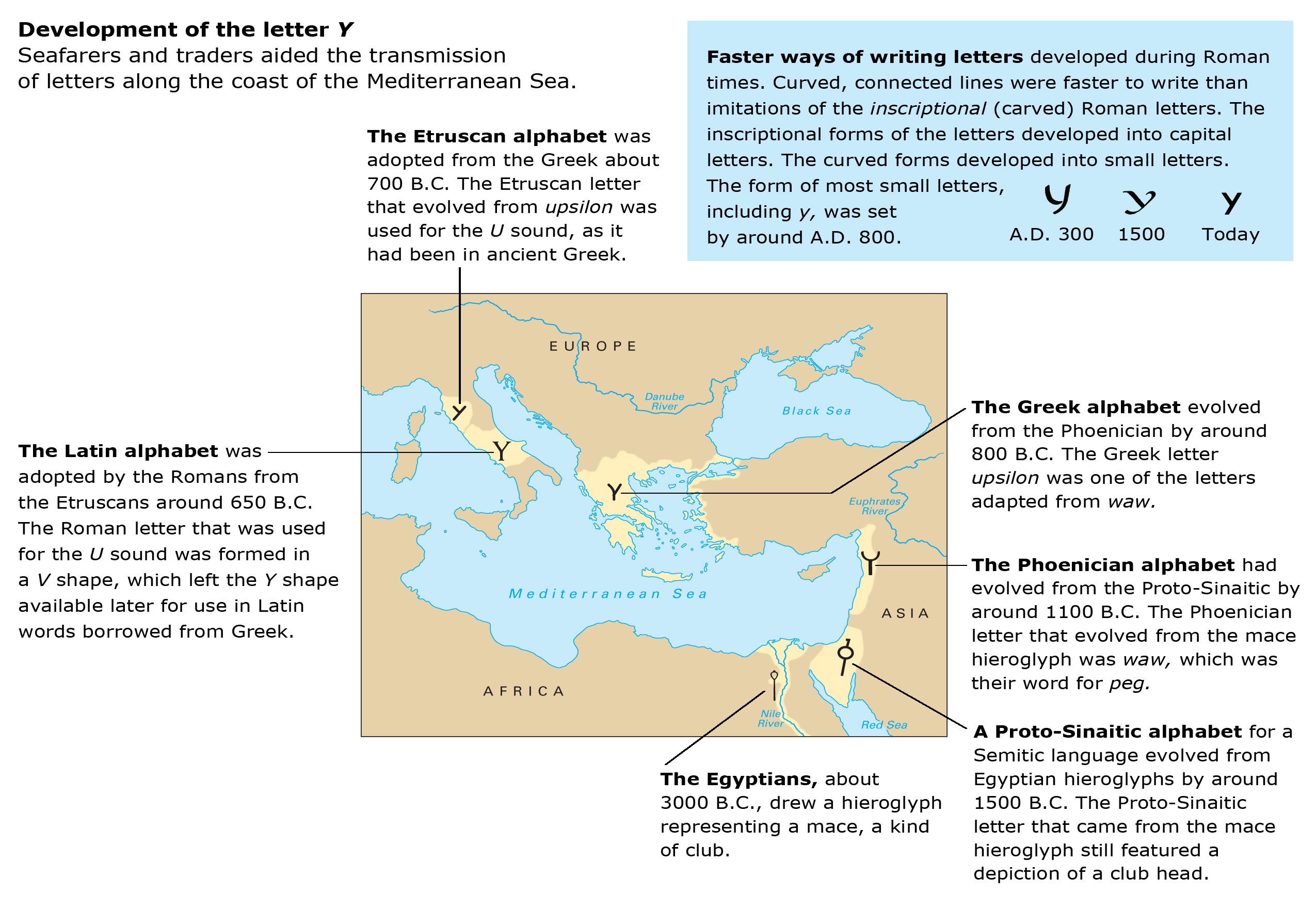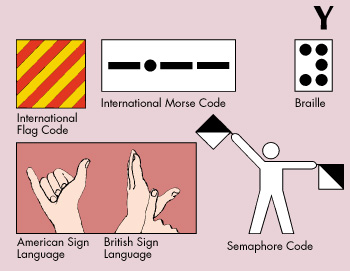Y is the 25th letter of the alphabet used for the modern English language. It is also used in a number of other languages, including French and Spanish. As a consonant, the letter is heard in such words as yesterday and yard. When used as a vowel, Y can have the same sound as a long I, as in fly; a short I, as in abyss; and a long E, as in pretty. Y also forms part of the spelling of the vowel sounds AY and OI, as in lay, obey, and boy. See Pronunciation .

The letters F, U, V, W, and Y all evolved from the sixth letter in the Phoenician alphabet, waw, which was the Phoenician word for peg. Scholars believe that waw evolved from an Egyptian hieroglyph (pictorial symbol) that represented a mace, a club with a heavy head. After the Greeks adapted the Phoenician alphabet around 800 B.C., waw evolved into two Greek letters, digamma and upsilon. The Greeks used upsilon for the U sound (ooh). The Etruscans adopted the Greek alphabet around 700 B.C., and they also used upsilon, which looked like a capital Y, for their U sound. When the Romans adopted the Etruscan alphabet, they formed the letter that had evolved from upsilon more like a capital V. This change left the Y letter shape available when the Romans needed a letter to write words borrowed from Greek.
The letter Y became a consonant letter in English because it resembled a special letter in Middle English, the form of English used from about 1100 to about 1485. The Middle English letter was called yogh, which was used in some manuscripts for the GH sound. Printers did not have this character available in type, so they substituted Y. Printers also used Y for the Old and Middle English character called a thorn. That character was pronounced like TH, but it looked something like a Y. As a result, Y was sometimes substituted for a thorn. For example, the Ye in such a phrase as “Ye Olde Shoppe,” would be pronounced The.

